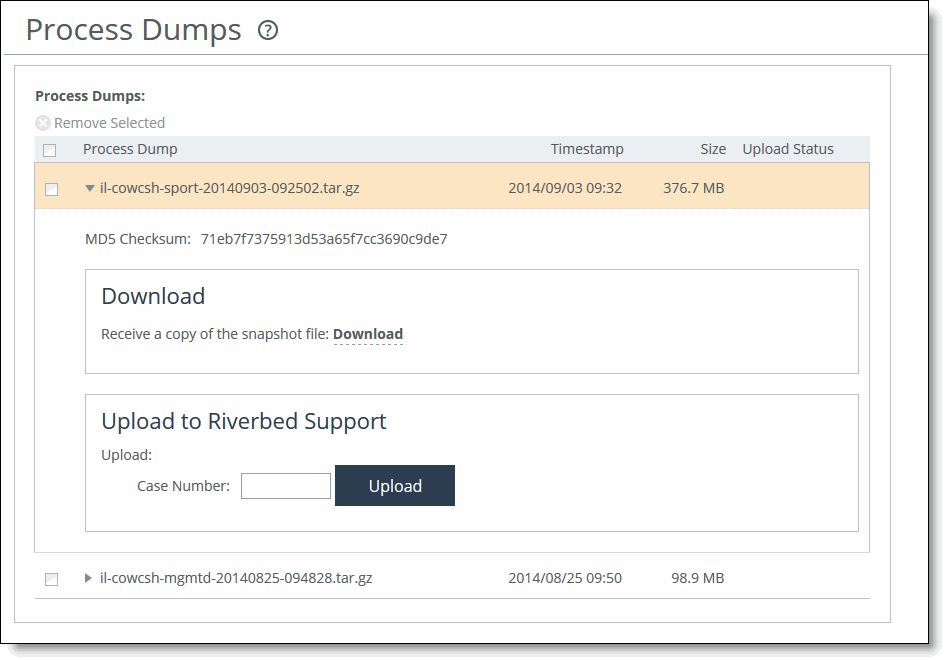Viewing Process Dumps
You can display and download process dumps in the Process Dumps page. A process dump is a saved copy of memory including the contents of all memory, bytes, hardware registers, and status indicators. Process dumps are written for any process that crashes, on both physical and virtual appliances.
Process dumps aren’t written with any specific frequency during normal operation, they’re only written on demand, should a process crash for some reason.
Process dump files can help you diagnose problems in the system.
To view process dump files
1. Choose Reports > Diagnostics: Process Dumps to display the Process Dumps page.
Figure: Process Dumps Page

2. Select the filename to open a file or save the file to disk.
To remove an entry, check the box next to the name and click Remove Selected.
To print the report, choose File > Print in your web browser to open the Print dialog box.
To download a process dump file to Riverbed support
1. Choose Reports > Diagnostics: Process Dumps to display the Process Dumps page.
2. Click Download to receive a copy of the previously saved process dump.
3. Select the filename to open a file or save the file to disk.
4. To remove a log, check the box next to the name and click Remove Selected.
To print the report, choose File > Print in your web browser to open the Print dialog box.
To upload a process dump file to Riverbed support
1. Choose Reports > Diagnostics: Process Dumps to display the Process Dumps page.
2. Optionally, specify a case number that corresponds to the process dump. We recommend using a case number: for example, 194170.
You can also enter the CLI command file process dump upload URL to specify a URL instead of a case number. When you specify a URL, the dump file goes directly to the URL.
If the URL points to a directory on the upload server, it must have a trailing backslash (/).
For example:
ftp://ftp.riverbed.com/incoming/
(not ftp://ftp.riverbed.com/incoming)
The filename as it exists on the appliance will then match the filename on the upload server.
For details, see the Riverbed Command-Line Interface Reference Manual.
3. Click Upload.
Because uploading a process dump can take a while (especially when including ESXi information on a SteelHead EX), a progress bar appears during the upload. When the process dump finishes uploading, the date, time, and a status of either uploaded (appears in green) or failed (appears in red). An explanation appears for uploads that fail.


